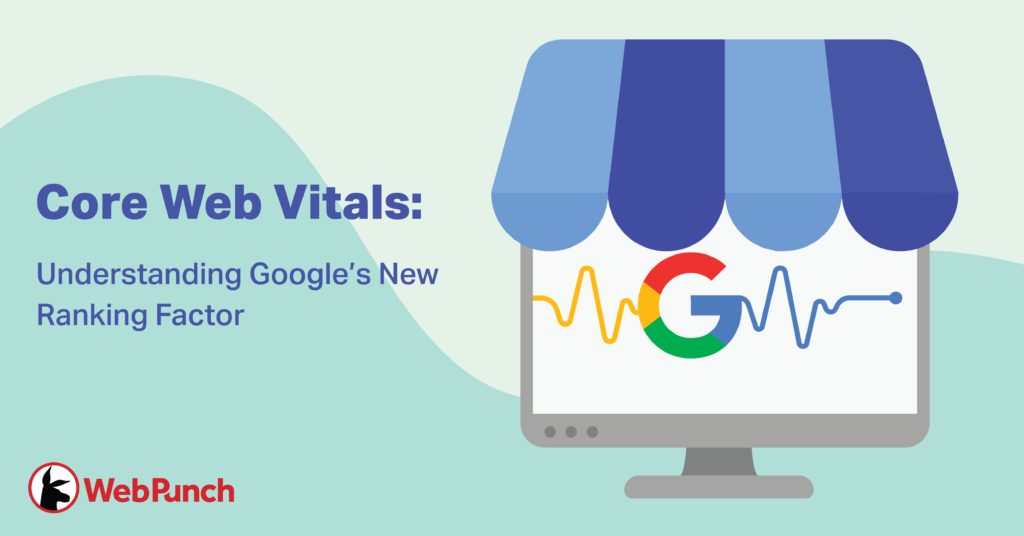Google recently announced that they’re going to add a new ranking factor to their algorithm, starting in 2021! This new factor is called Core Web Vitals, and understanding what it is can help your business rank higher on Google Search so that more people see the excellent services you have to offer. We’re always in your corner to help your business perform the best it possibly can online, and we’re happy to bring you a guide to understanding Core Web Vitals!
What are Core Web Vitals?
Core Web Vitals are pieces of information about your website that can give experts an idea of how optimized for speed your user experience is. They include information such as how fast your page loads, how quickly links within your page load, and how quickly your mobile page loads comparatively. The key word to understanding Core Web Vitals is speed.
According to Google’s blog, there are three important factors that will be part of their Web Vitals measurement: Largest Contentful Paint (LCP), First Input Delay (FID), and Cumulative Layout Shift (CLS). Although all three of these measurements are complicated, we’ve summarized the most important points.
LCP is how quickly your webpage loads for a user. This speed is affected by the largest images and videos on your page as well as your server time, code, and the user’s end of the rendering. User-end rendering is outside of your control. This includes the factors that determine how quickly things load on the user’s side of things.
FID is the speed it takes to internally load a new page when a user clicks on a button or a link within your webpage. This differs from LCP, because FID is measured once the original page has already loaded.
CLS is the speed it takes for your website to become stable. In this case, ‘stable’ means the point at which icons and text on your webpage stop moving, and the user can click on them without worrying about the page shifting. Think of pages that shift as they load that have ads right beneath the content you actually want to see, forcing you to click on the ad when the page finally finishes loading and the buttons shift. These kinds of pages will be penalized by Google’s new algorithm. Together, these three factors give a snapshot of how your website is performing in regards to speed.
Why is Google making this change?
We all know what it’s like to wait for an important website to load, and the feelings of frustration that come with delay. Google’s algorithms want the best quality websites to show up first on a page of search results, and by including Core Web Vitals as an important ranking factor, they hope to make this even better. Google found that if a website meets a certain minimum standard in their Core Web Vitals, users are 24% less likely to leave it. They also found that more than four seconds of load time can cause a huge drop in the amount of users that stick around to even get to your website. That’s a pretty big incentive to make sure your load time is as fast as possible! It seems, at least according to Google, that faster websites are better websites, and better sites will naturally be ranked higher.
How am I doing on these metrics?
Luckily, along with giving people plenty of time to prepare, Google is making it possible for website owners to check these statistics. All you have to do to see how you’re doing compared to the average. And you don’t have to memorize their threshold values either; Google instead will let you know if your FID, CLS, and LCP are “Good,” “Needs Improvement,” or “Poor.” In order to use this tool, you do have to verify your ownership of the website, but Google gives several different options for doing this and provides instructions for each one. This process is fairly technical, so if possible, it’s probably a good idea to have a Web Developer do this part and let you know how your sites are doing.
If you’re interested in the exact metrics Google will use for evaluating these, we’ve included Google’s table. The “Good” and “Poor” sections give the limits for what Google considers acceptable for each factor, and the “Percentile” is the percentage of hits to a website that must hit the “Good” speed in order for the category to be considered as such. Google’s blog also has quite a bit more detailed information about how the parameters for these factors were set and why, if you’re technically-minded and want to dive into the deep end of this issue.
Once you know how you’re doing on these factors, you’ll be able to evaluate if you need to have your developers make changes to your site to improve your Google ranking. Maybe you’re already doing great! Maybe small improvements will end up making a huge difference for both Google and your users. Although this process will likely take time, Google has promised that they will give a six-month warning before Core Web Vitals are added to the algorithm, so you have at least some time to evaluate your performance and make sure you’re in good shape! As always, WebPunch is here to help you knock out your competition.
Author Bio
Natalie Jones is part of the Content Team at WebPunch. She’s from Boulder, Colorado, and went to Colorado State University. When she’s not working, she loves music, reading, hiking through Colorado’s most beautiful trails, and planning new road trips. Her current goal is to visit all fifty states by the time she’s thirty.


